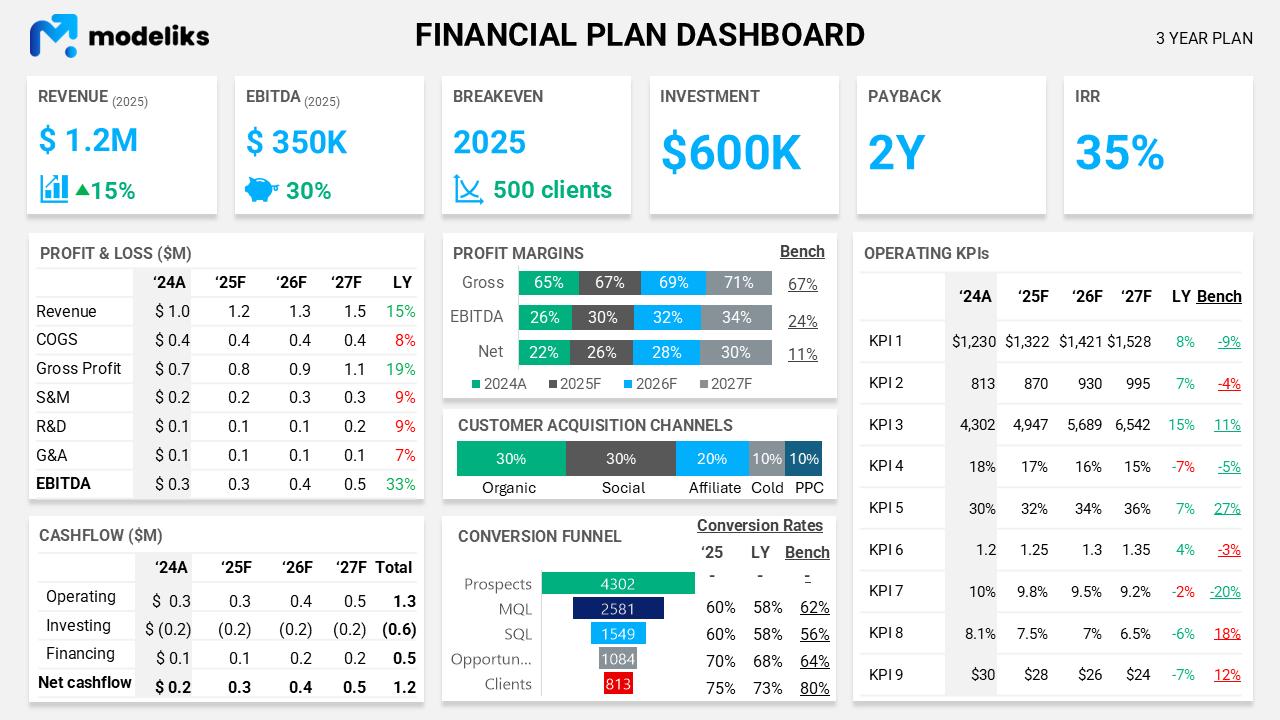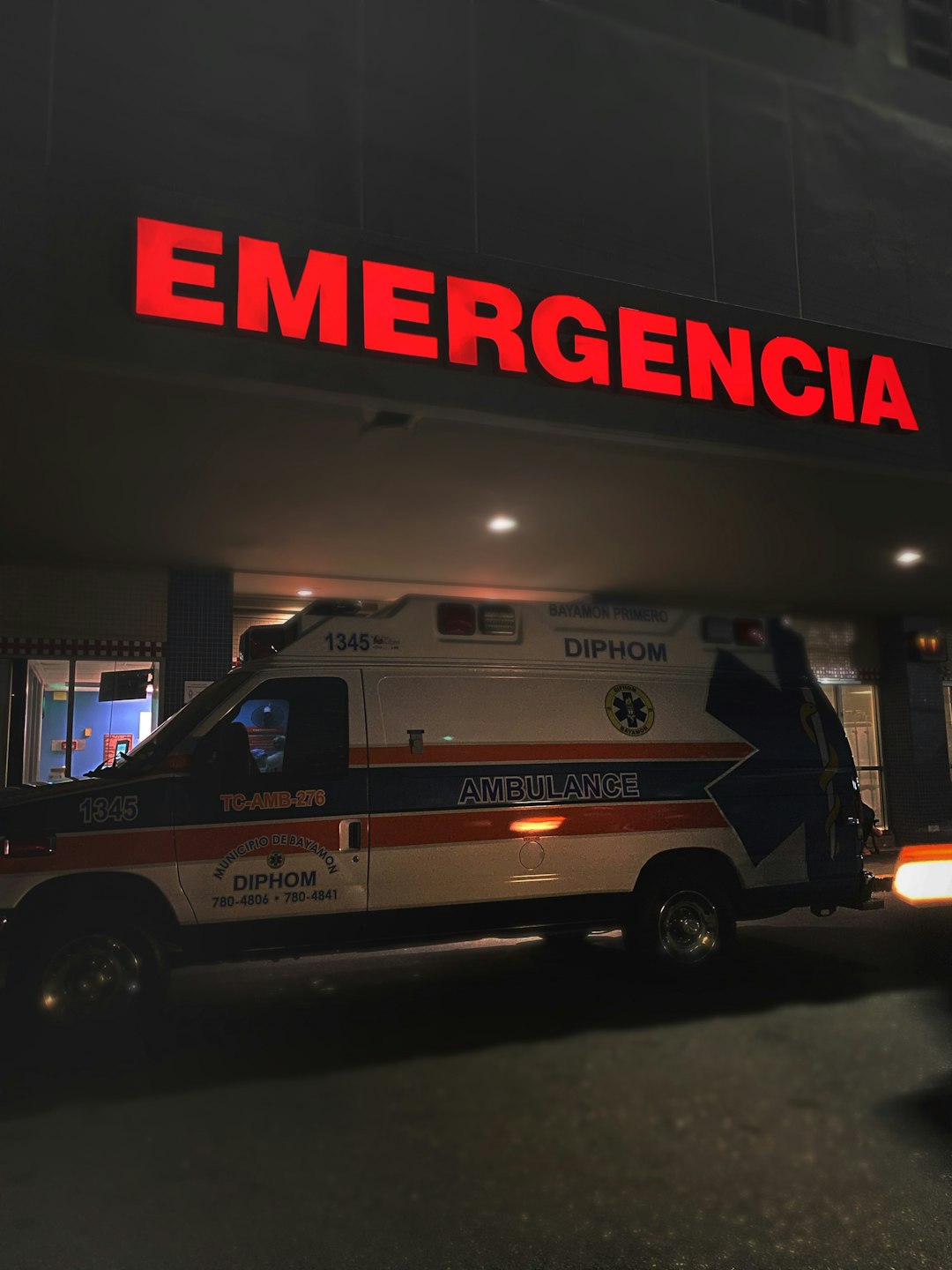Our Emergency Management and Disaster Preparedness Financial Model Structure covers all the essential aspects you need to consider when starting or scaling a Emergency Management and Disaster Preparedness business. By following this structure, you can better understand your revenue streams, costs, and assets, helping you optimize profitability and strategically plan for growth.
Financial planning for an Emergency Management and Disaster Preparedness business is critical to ensuring that the company can effectively respond to crises and operate efficiently. A robust financial model outlines typical revenues, direct costs, employees, expenses, and assets you need to consider when starting or growing your business. This model might also inspire ideas for new and profitable revenue streams because it enhances resilience and adaptability of your business in the face of unpredictable events. The Emergency Management and Disaster Preparedness financial model structure, however, remains complex; although it is essential for long-term success.
The Emergency Management and Disaster Preparedness financial model structure
Revenues
The conventional revenue streams for an Emergency Management and Disaster Preparedness enterprise encompass:
- Consulting Services (where revenue is determined by the quantity of consulting hours billed and the hourly rate);
- Training Programs (which generate income from fees levied on participants attending training sessions);
- Equipment Sales (where revenue arises from the sale of emergency management tools, calculated by multiplying the unit price by the number of units sold);
- Subscription Services (involving regular income from clients who subscribe to alert or monitoring services);
- Government Contracts (where revenue is acquired by fulfilling government tenders or contracts, typically assessed on a per-project basis);
- Emergency Response Fees (fees charged for actual disaster response services provided);
- Preparedness Audits (income generated from conducting audits for organizations seeking to enhance their readiness);
- Plan Development (fees assessed for creating or updating emergency management plans for various entities).
However, it is essential to recognize that these streams can fluctuate because of market demands and organizational needs.
Cost of goods sold
The corresponding cost of goods sold for these revenue streams includes labor, materials, and overhead directly attributed to delivering services or products such as consulting, training program materials, the cost of equipment sold, and resources required for effective emergency response. However, this cost can vary significantly because of numerous factors. Although these elements are essential, they can also lead to increased expenses, which impacts overall profitability.
Employees
Typical employees you will need include:
- Emergency Management Consultants: Responsible for advising clients and developing strategies. They play a crucial role; however, Trainers conduct training sessions and workshops for clientele.
- Account Managers: Oversee client relationships and service delivery, but Field Technicians install and maintain equipment. They also assist in responses.
- Administrative Staff: Manage office tasks, coordinate schedules, and handle documentation because this ensures smooth operations. Although each role is distinct, they all contribute to the overall success of the organization.
Operating expenses
Typical operating expenses include:
- Rent: Cost of office or operational space.
- Utilities: Expenses for electricity, water, and communications; however, these costs can vary significantly. This is particularly true in urban areas, although rural regions may also experience fluctuations. Because of these factors, budgeting for such utilities can be challenging. Moreover, many individuals often overlook the impact that these expenses can have on their overall financial health, but awareness is crucial.
- Salaries: Employee compensation.
- Training materials: Costs for producing and updating training content, however, these can vary significantly.
- Travel expenses: Costs associated with travel for services or training sessions, because they often fluctuate.
- Insurance: Premiums for liability, property, and business insurance, although necessary, they can be a financial burden.
- Marketing: Expenditure on advertising and promotions, but this is crucial for growth.
- Office supplies: Regular procurement of office necessities, which can add up over time.
- Technology: Maintenance and purchase of tech equipment and software; this is vital for efficiency.
- Licensing fees: Costs associated with permits and licenses which are often overlooked.
Assets
Typical assets required include:
- Response Vehicles: These are crucial for rapid deployment to disaster sites.
- Computers and Software: Essential for planning and operations; however, without appropriate Emergency Equipment, including tools and kits, the ability to respond quickly diminishes.
- Training Facilities: Spaces equipped for conducting large training programs. Although this infrastructure is vital, it requires continuous evaluation and improvement to ensure effectiveness.
Funding options
Typical funding options include:
- Bank Loans: Conventional borrowing methods from financial institutions can be quite beneficial.
- Government Grants: Funds provided by government for disaster preparedness initiatives can significantly enhance resources available, however, they may come with specific requirements.
- Venture Capital: Investment from firms looking to capitalize on innovative preparedness solutions presents opportunities for growth.
- Angel Investors: Individuals providing capital for business startups often seek a return on their investment, but this can introduce additional pressure.
Driver-based financial model for Emergency Management and Disaster Preparedness
The Emergency Management and Disaster Preparedness financial model summary illustrates a driver-based financial model for Emergency Management and Disaster Preparedness. A truly professional Emergency Management and Disaster Preparedness financial model is based on operating KPIs (also known as “drivers”) that are relevant to the business.
- Response Time: The average time taken to respond to an emergency, which is crucial for effectiveness.
- Customer Retention Rate: Percentage of clients that continue to use services over a year; this is important because it reflects stability.
- Training Completion Rate: Percentage of participants who complete training programs successfully, therefore affecting overall readiness.
- Equipment Utilization Rate: A measure of how often equipment is used for its intended purpose, which can impact efficiency.
- Contract Renewal Rate: The percentage of contracts that are renewed is essential for sustained operation.
- Profit Margin Per Project: The profitability achieved per project undertaken, although it can vary significantly depending on numerous factors.
- Staff turnover rate (the rate at which employees leave the business) is a crucial metric.
- Incident resolution time (the average time taken to resolve incidents) can influence customer satisfaction significantly.
- Revenue growth rate , defined as the percentage increase in revenue over a specific period, is another vital indicator of success.
Driver-based financial planning is a process, although it may seem complex, that identifies key activities—also known as “drivers”—which have the highest impact on business outcomes. This method allows for the establishment of relationships between financial results and the necessary resources like people, marketing budgets, equipment, etc., needed to achieve those results. If you wish to learn more about driver-based financial planning, you should consider watching the founder of Modeliks explain it in the video below. Because it may provide valuable insights, understanding this approach can be essential for informed decision-making.
Need a business plan?
Create one with Modeliks AI in the next hour!
AI powered business planning for Startups and SMEs.
The financial plan output
The objective of the financial forecast outputs should enable you, as well as your management, board, or investors, to quickly comprehend how your Emergency Management and Disaster Preparedness venture will perform in the future. You will gain reassurance that the plan is thoughtfully constructed, realistic, and attainable. Furthermore, you will understand what investment is required to implement this plan and what the return on that investment will be. To realize these objectives, here is a one-page template which outlines how to effectively present your financial plan.

Besides this one-page summary of your plan, you will require the three projected financial statements:
- Profit and Loss: A statement that details revenues, costs, and expenses.
- Balance Sheet: A snapshot of assets, liabilities, and equity.
- Cash Flow Statement: A summary of cash inflows and outflows.
Emergency Management and Disaster Preparedness financial model summary
A professional Emergency Management and Disaster Preparedness financial model will help you think through your business, identify the resources you need to achieve your targets, set goals, measure performance, raise funding, and make confident decisions to manage and grow your business. However, achieving these aims requires careful consideration and planning.
If you need help with your financial plan, try Modeliks , a financial planning solution for SMEs and startups or contact us at contact@modeliks.com and we can help.
Author:
Blagoja Hamamdjiev
, Founder and CEO of
Modeliks
, Entrepreneur, and business planning expert.
In the last 20 years, he helped everything from startups to multi-billion-dollar conglomerates plan, manage, fundraise, and grow.

TAKE MODELIKS FOR A SPIN
Not sure which plan?
Start with a 15 days free trial.
You will have access to the full functionality of Modeliks. The only restriction in the free trial is that you cannot download or share your business plan outside Modeliks. Credit card is not required to subscribe for the free trial.






